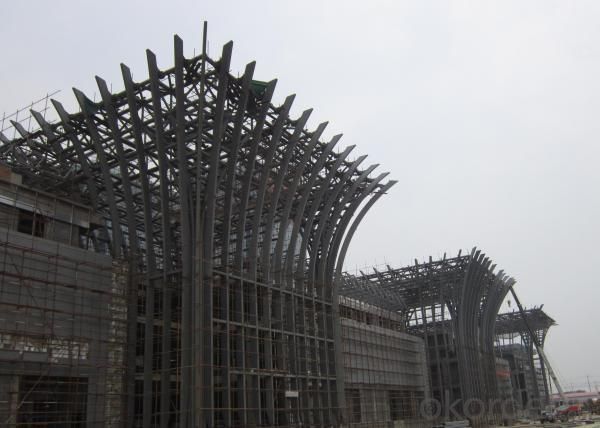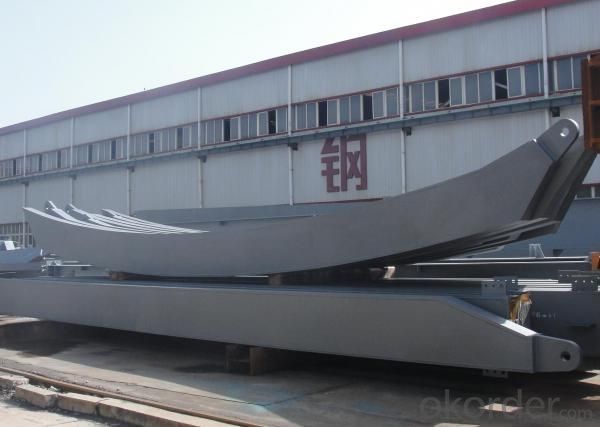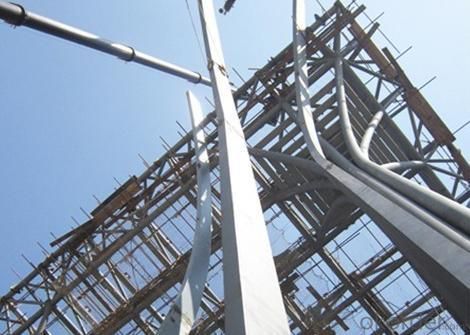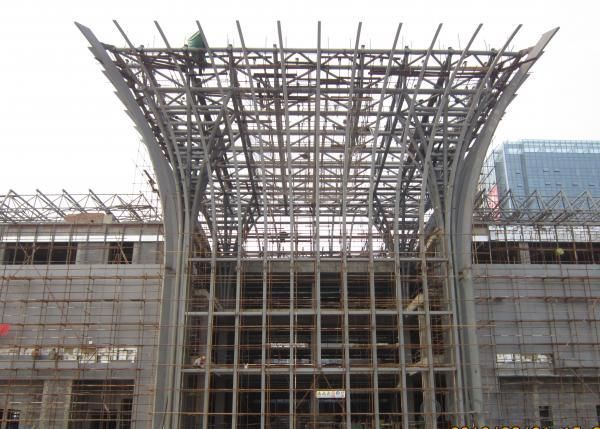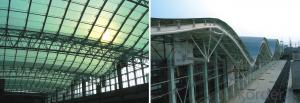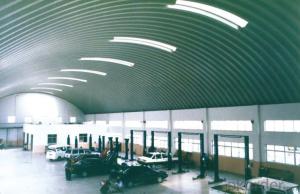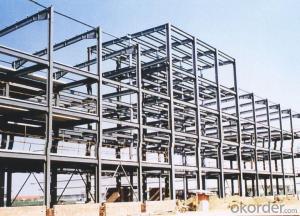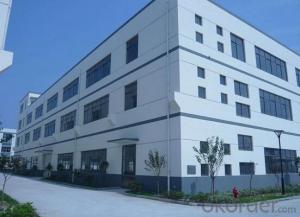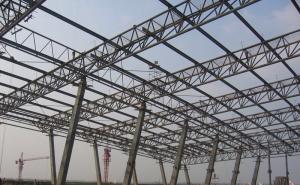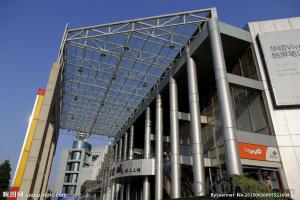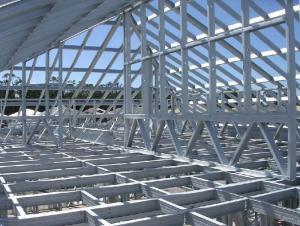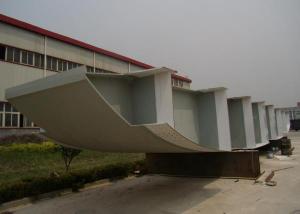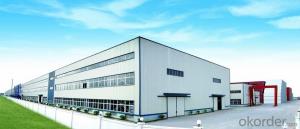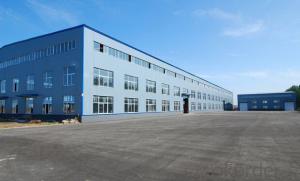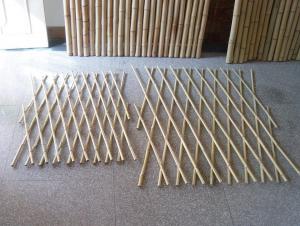Railway Station Steel Structure
- Loading Port:
- Tianjin Port
- Payment Terms:
- TT or LC
- Min Order Qty:
- 1 SET m.t.
- Supply Capability:
- 5000MTONS/MONTH m.t./month
OKorder Service Pledge
OKorder Financial Service
You Might Also Like
Specifications of railway station steel structure
Project: Jinan west railway station
Position: The Beijing-Shanghai high speed railway (Jinan)
Steel dosage: 5000MTs
Structure type: Box, tube, bending and twisting, transverse connection
1. GB standard material
2. High Structural safety and reliability
3. The production can reach GB/JIS/ISO/ASME standard
Packaging & Delivery of railway station steel structure
1. According to the project design and the component size, usually the main component parts are nude packing and shipped by bulk vessel. And the small parts are packed in box or suitable packages and shipped by containers.
2. This will be communicated and negotiated with buyer according to the design.
Engineering Design Software of railway station steel structure
Tekla Structure \ AUTO CAD \ PKPM software etc
⊙Complex spatial structure project detailed design
⊙Construct 3D-model and structure analysis. ensure the accuracy of the workshop drawings
⊙Steel structure detail ,project management, automatic Shop Drawing, BOM table automatic generation system.
⊙Control the whole structure design process, we can obtain higher efficiency and better results
Technical support of railway station steel structure
|
Worker |
Rate of frontline workers with certificate on duty reaches 100% |
|
Welder |
186 welders got AWS & ASME qualification 124 welders got JIS qualification 56 welders got DNV &BV qualification |
|
Technical inspector |
40 inspectors with UT 2 certificate 10 inspectors with RT 2 certificate 12 inspectors with MT 2 certificate 3 inspectors with UT3 certificate |
|
Engineer |
21 engineers with senior title 49 engineers with medium title 70 engineers with primary title. 61 First-Class Construction Engineers 182 Second-Class Construction Engineers |
|
International certification |
10 engineers with International Welding engineer, 8 engineers with CWI. |
Production Flow of steel structure/steel frame
Material preparation—cutting—fitting up—welding—component correction—rust removal—paint coating—packing—to storage and transportation (each process has the relevant inspection)
Usage/Applications of steel structure/steel frame
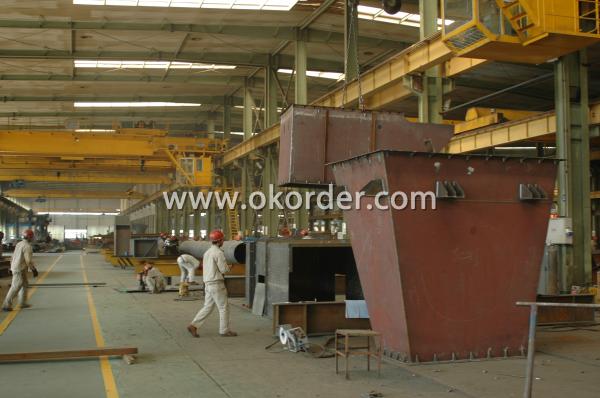
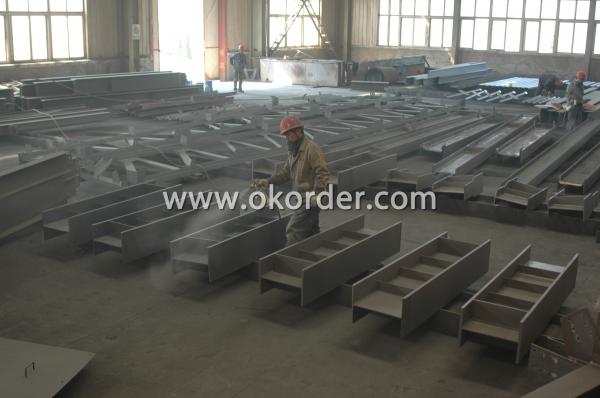
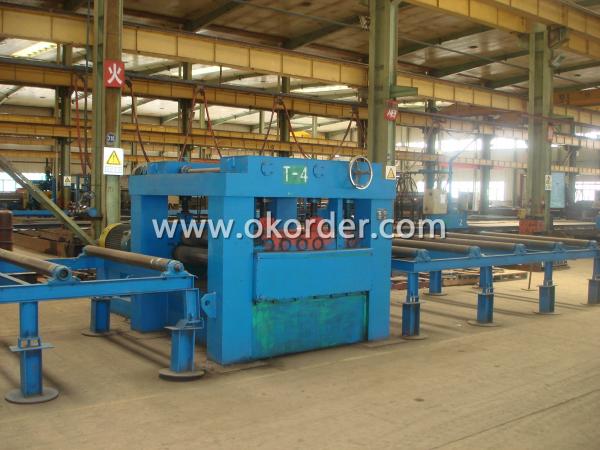

*Characters of Structure Steel
1. Steel is characterized by high strength, light weight, good rigidity, strong deformation capacity, so it is suitable for construction of large-span, super high and super-heavy buildings particularly;
2. It with good homogeneous and isotropic, is an ideal elastomer which perfectly fits the application of general engineering;
3. The material has good ductility and toughness, so it can have large deformation and it can well withstand dynamic loads;
4. Steel structure’s construction period is short;
5. Steel structure has high degree of industrialization and can realize-specialized production with high level of mechanization.
*Steel structure application
1. Heavy industrial plants: relatively large span and column spacing; with a heavy duty crane or large-tonnage cranes; or plants with 2 to 3 layers cranes; as well as some high-temperature workshop should adopt steel crane beams, steel components, steel roof, steel columns, etc. up to the whole structure.
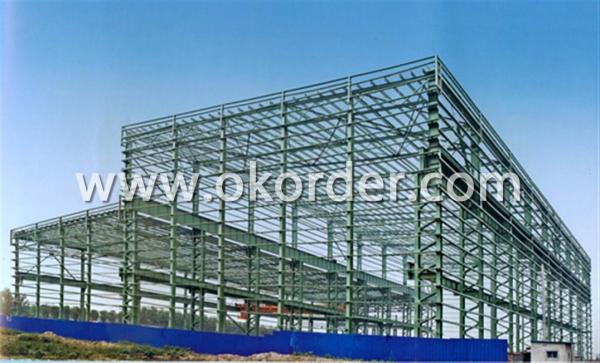
2. Large span structure: the greater the span of the structure, the more significant economic benefits will have by reducing the weight of the structure
3. Towering structures and high-rise buildings: the towering structure, including high-voltage transmission line towers, substation structure, radio and television emission towers and masts, etc. These structures are mainly exposed to the wind load. Besides of its light weight and easy installation, structure steel can bring upon with more economic returns by reducing the wind load through its high-strength and smaller member section.
4. Structure under dynamic loads: As steel with good dynamic performance and toughness, so it can be used directly to crane beam bearing a greater or larger span bridge crane
5. Removable and mobile structures: Structure Steel can also apply to movable Exhibition hall and prefabricated house etc by virtue of its light weight, bolt connection, easy installation and uninstallation. In case of construction machinery, it is a must to use structure steel so as to reduce the structural weight.
6. Containers and pipes: the high-pressure pipe and pipeline, gas tank and boiler are all made of steel for the sake of its high strength and leakproofness
7. Light steel structure: light steel structures and portal frame structure combined with single angle or thin-walled structural steel with the advantages of light weight, build fast and steel saving etc., in recent years has been widely used.
8. Other buildings: Transport Corridor, trestle and various pipeline support frame, as well as blast furnaces and boilers frameworks are usually made of steel structure.
All in all, according to the reality, structure steel is widely used for high, large, heavy and light construction.
- Q: What are the different methods of steel connection used in steel structures?
- There are several methods of steel connection used in steel structures, including welding, bolting, and riveting. Welding involves fusing the steel components together using heat and pressure, creating a strong and permanent bond. Bolting involves using bolts to connect steel components, providing a flexible and easy-to-assemble connection. Riveting, on the other hand, involves using metal pins called rivets to connect steel components by hammering them into place. Each method has its advantages and suitability depending on the specific requirements of the steel structure.
- Q: How are steel structures designed for educational campuses and institutions?
- Steel structures for educational campuses and institutions are typically designed with specific considerations in mind. Firstly, the design must prioritize safety and structural integrity to ensure the protection of students, staff, and visitors. Additionally, the design should accommodate the functional requirements of the educational facilities, such as classrooms, laboratories, libraries, and auditoriums. Flexibility in design is often incorporated to allow for future modifications or expansions. Sustainability and energy efficiency are also important factors, with the use of steel allowing for recyclability and reduced construction waste. Overall, the design of steel structures in educational campuses and institutions aims to create a conducive learning environment while ensuring durability, safety, and sustainability.
- Q: How are steel educational buildings constructed?
- Steel educational buildings are constructed using a combination of pre-engineered steel components and traditional construction methods. The process typically involves the design and engineering of the building, followed by the fabrication of steel components off-site. These components are then transported to the construction site and assembled using bolts and connections. The steel framework provides strength, stability, and flexibility, while other materials such as concrete or wood may be used for flooring, walls, and roofing. This method allows for faster construction times, cost-effectiveness, and the ability to accommodate various architectural designs and layouts.
- Q: How do steel structures provide resistance against vibration-induced fatigue?
- Steel structures provide resistance against vibration-induced fatigue through a combination of their inherent material properties and design considerations. Firstly, steel has excellent strength and stiffness properties, making it an ideal material for withstanding dynamic forces and vibrations. It has a high modulus of elasticity, which means it can deform elastically under load and return to its original shape once the load is removed. This elasticity helps absorb and dissipate the energy generated by vibrations, reducing the risk of fatigue failure. Additionally, steel structures are designed to have sufficient damping characteristics, which refers to their ability to dissipate vibrational energy. Damping is achieved through the use of various techniques such as adding damping materials or incorporating structural elements that have inherent damping properties. By dissipating energy, damping reduces the magnitude and duration of vibrations, minimizing the potential for fatigue damage. Moreover, steel structures are designed with appropriate stiffness and rigidity to minimize resonance effects. Resonance occurs when the frequency of external vibrations matches the natural frequency of a structure, resulting in amplified vibrations and potential fatigue failure. By designing structures with different natural frequencies or by adding damping elements, the risk of resonance-induced fatigue can be significantly reduced. Furthermore, proper design practices such as ensuring adequate structural support, minimizing stress concentrations, and employing fatigue-resistant details and connections are crucial in preventing fatigue failure. These design considerations distribute stresses more evenly throughout the structure, reducing the likelihood of stress concentrations that can lead to fatigue cracks. In summary, steel structures provide resistance against vibration-induced fatigue through their material properties, such as strength and elasticity, as well as through design considerations such as damping, resonance avoidance, and fatigue-resistant details. By incorporating these factors into the design and construction of steel structures, engineers can ensure their long-term durability and resistance against vibration-induced fatigue.
- Q: How do steel structures contribute to sustainable building practices?
- Steel structures contribute to sustainable building practices in several ways. Firstly, steel is a highly durable material that can withstand extreme weather conditions and has a long lifespan. This reduces the need for frequent maintenance and replacement, resulting in less waste generation and reduced use of resources. Additionally, steel is a recyclable material, which means that it can be recovered and reused at the end of its life cycle, reducing the demand for virgin materials and minimizing environmental impact. Furthermore, steel structures can be prefabricated off-site, resulting in reduced construction time, lower energy consumption, and minimized disturbance to the surrounding environment. Overall, steel structures offer sustainable building solutions by promoting long-term durability, recyclability, and efficient construction practices.
- Q: What are the different types of steel coatings used in structures?
- There are several different types of steel coatings that are commonly used in structures for various purposes. Some of the most common types include: 1. Galvanized Coating: This is one of the most widely used steel coatings, which involves applying a layer of zinc to the surface of the steel. Galvanized coatings provide excellent corrosion resistance and protect the steel from rust and other forms of degradation. It is often used in outdoor structures and applications where the steel is exposed to moisture and harsh weather conditions. 2. Epoxy Coating: Epoxy coatings are applied to steel surfaces to provide protection against corrosion and chemical damage. These coatings are highly durable and resistant to abrasion, making them ideal for structures that are exposed to harsh industrial environments or chemical exposure. Epoxy coatings also provide a smooth and attractive finish to the steel surface. 3. Powder Coating: Powder coating is a dry finishing process that involves applying a layer of finely ground particles onto the steel surface. The powder is electrostatically charged and then cured under heat, creating a hard, durable, and smooth coating. Powder coatings provide excellent resistance to corrosion, UV rays, and chemicals, making them suitable for both indoor and outdoor structures. 4. Polyurethane Coating: Polyurethane coatings are typically used in structures where aesthetics and durability are important. These coatings provide excellent resistance to weathering, UV rays, and abrasion, making them suitable for exterior structures such as bridges, stadiums, and architectural facades. Polyurethane coatings also offer a wide range of colors and finishes, allowing for customized designs. 5. Thermal Spray Coating: Thermal spray coatings involve applying a layer of molten or heated material onto the steel surface using a spray gun. These coatings can be made of various materials such as metals, ceramics, or polymers, depending on the desired properties. Thermal spray coatings are used to enhance the performance of steel structures by providing increased corrosion resistance, wear resistance, and thermal insulation. Overall, the choice of steel coating depends on the specific requirements of the structure and the environment it will be exposed to. Each type of coating has its own advantages and limitations, and careful consideration should be given to select the most appropriate one for optimal performance and longevity of the steel structure.
- Q: How are steel structures designed and constructed to meet accessibility codes?
- Steel structures are designed and constructed to meet accessibility codes by adhering to specific guidelines and regulations that ensure equal access for all individuals. This includes incorporating features such as ramps, handrails, door openings, and elevators that allow individuals with disabilities to navigate the structure safely and independently. Additionally, careful consideration is given to the placement and dimensions of these accessibility features to ensure compliance with accessibility codes and standards.
- Q: Who are the customers of color steel and steel structure?
- Steel structure is mainly used in all types of production plants, customers mainly entrepreneurs, investment companies, all types of production enterprises, covering all sectors.
- Q: What are the fire-resistant properties of steel structures?
- Steel structures have excellent fire-resistant properties due to the high melting point of steel. They can withstand high temperatures for extended periods without losing their structural integrity, making them less likely to collapse during a fire. Additionally, steel does not contribute to the spread of flames, which further enhances its fire resistance.
- Q: What is the purpose of steel beams in a structure?
- The purpose of steel beams in a structure is to provide strength, support, and stability to the overall construction. Steel beams are known for their exceptional load-bearing capacity, making them ideal for withstanding heavy loads and transferring them safely to the foundation or other load-bearing elements of the structure. Steel beams are commonly used in various types of buildings such as skyscrapers, bridges, warehouses, and residential homes. They serve as essential structural components, often forming the skeleton or framework of the building. By distributing the weight and stress evenly, steel beams help ensure the stability and integrity of the structure, preventing it from collapsing or deforming under its own weight or external forces such as wind, earthquakes, or snow loads. Moreover, steel beams offer flexibility in design and construction. With their high strength-to-weight ratio, steel beams can span longer distances without the need for additional support columns or walls, allowing for open and spacious interior layouts. This versatility allows architects and engineers to create innovative designs and maximize usable space. In addition to their structural role, steel beams also contribute to the fire resistance of the building. Steel is a non-combustible material and has a high melting point, making it highly resistant to fire. When properly coated or protected, steel beams can maintain their structural integrity even in high-temperature environments, providing valuable time for occupants to evacuate and firefighters to control the fire. Overall, the purpose of steel beams in a structure is to ensure the safety, stability, and longevity of the building, while also allowing for efficient and flexible design possibilities.
1. Manufacturer Overview
| Location | SHANDONG,China |
| Year Established | 2008 |
| Annual Output Value | Above US$20 Billion |
| Main Markets | WEST AFRICA,INDIA,JAPAN,AMERICA |
| Company Certifications | ISO9001:2008;ISO14001:2004 |
2. Manufacturer Certificates
| a) Certification Name | |
| Range | |
| Reference | |
| Validity Period |
3. Manufacturer Capability
| a) Trade Capacity | |
| Nearest Port | TIANJIN PORT/ QINGDAO PORT |
| Export Percentage | 0.6 |
| No.of Employees in Trade Department | 3400 People |
| Language Spoken: | English;Chinese |
| b) Factory Information | |
| Factory Size: | Above 150,000 square meters |
| No. of Production Lines | Above 10 |
| Contract Manufacturing | OEM Service Offered;Design Service Offered |
| Product Price Range | Average, High |
Send your message to us
Railway Station Steel Structure
- Loading Port:
- Tianjin Port
- Payment Terms:
- TT or LC
- Min Order Qty:
- 1 SET m.t.
- Supply Capability:
- 5000MTONS/MONTH m.t./month
OKorder Service Pledge
OKorder Financial Service
Similar products
Hot products
Hot Searches
Related keywords




